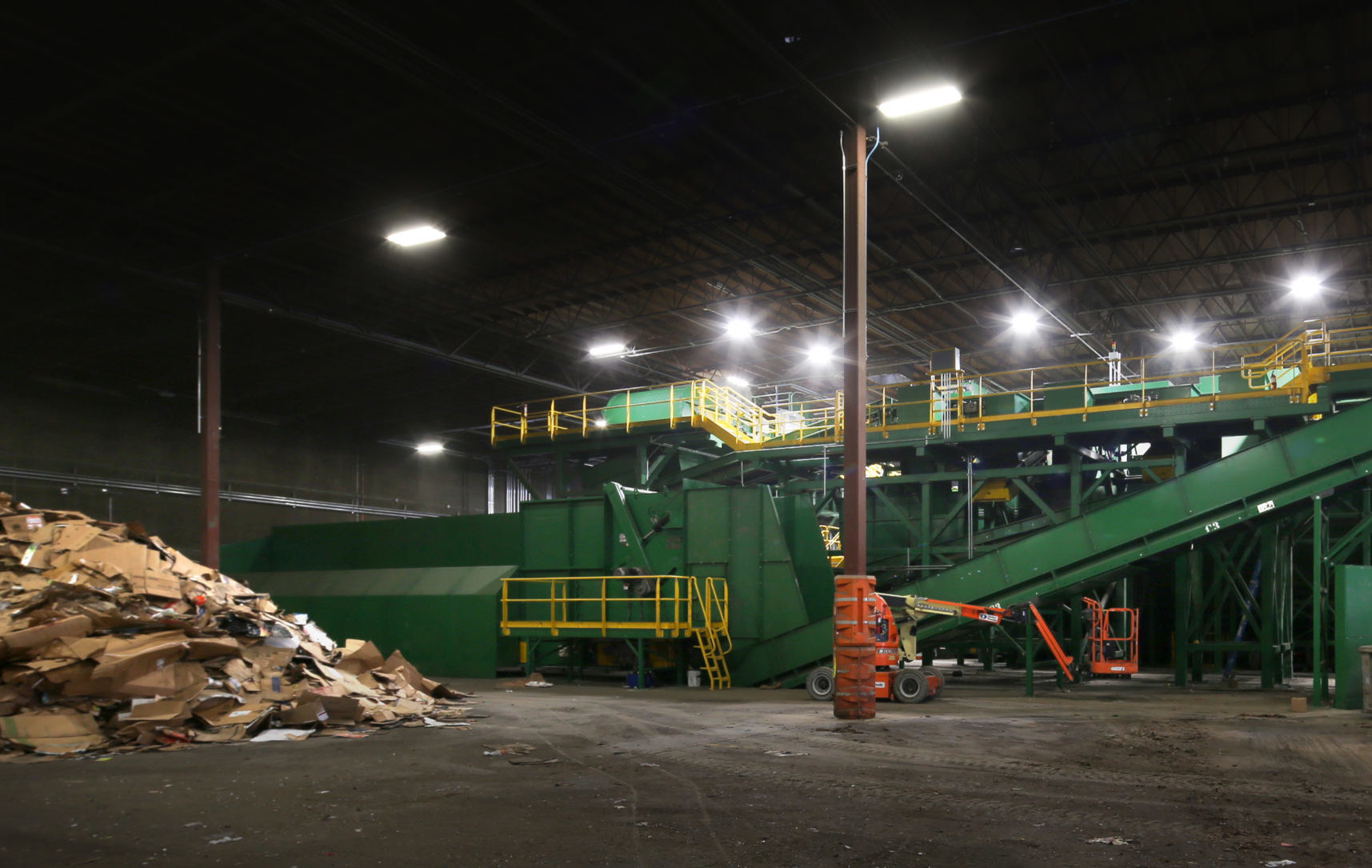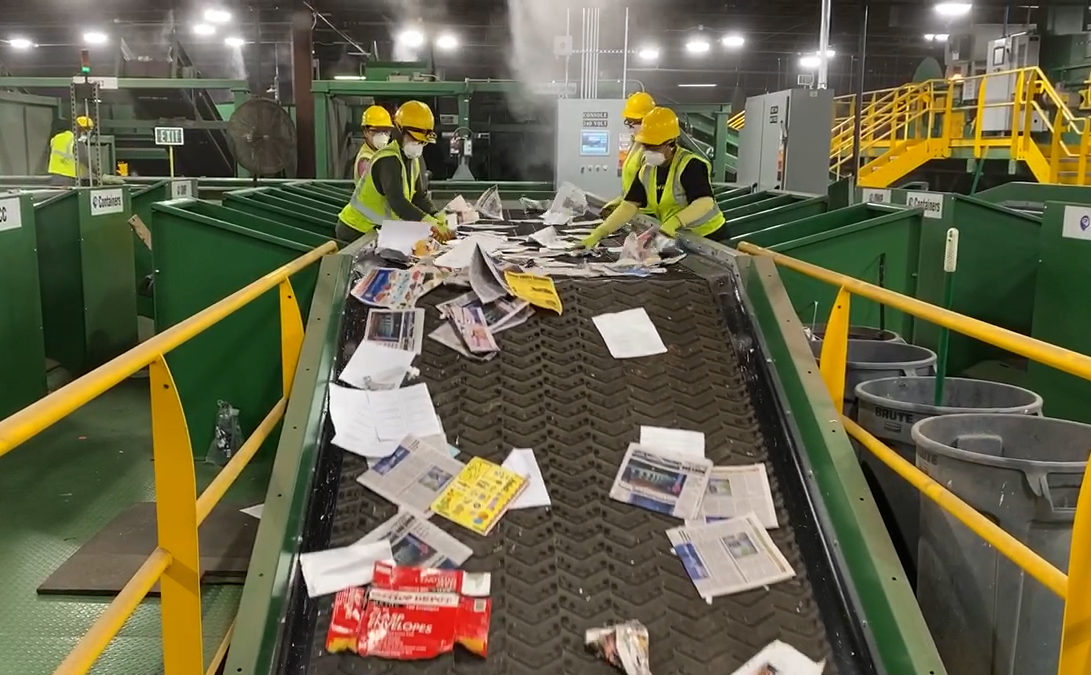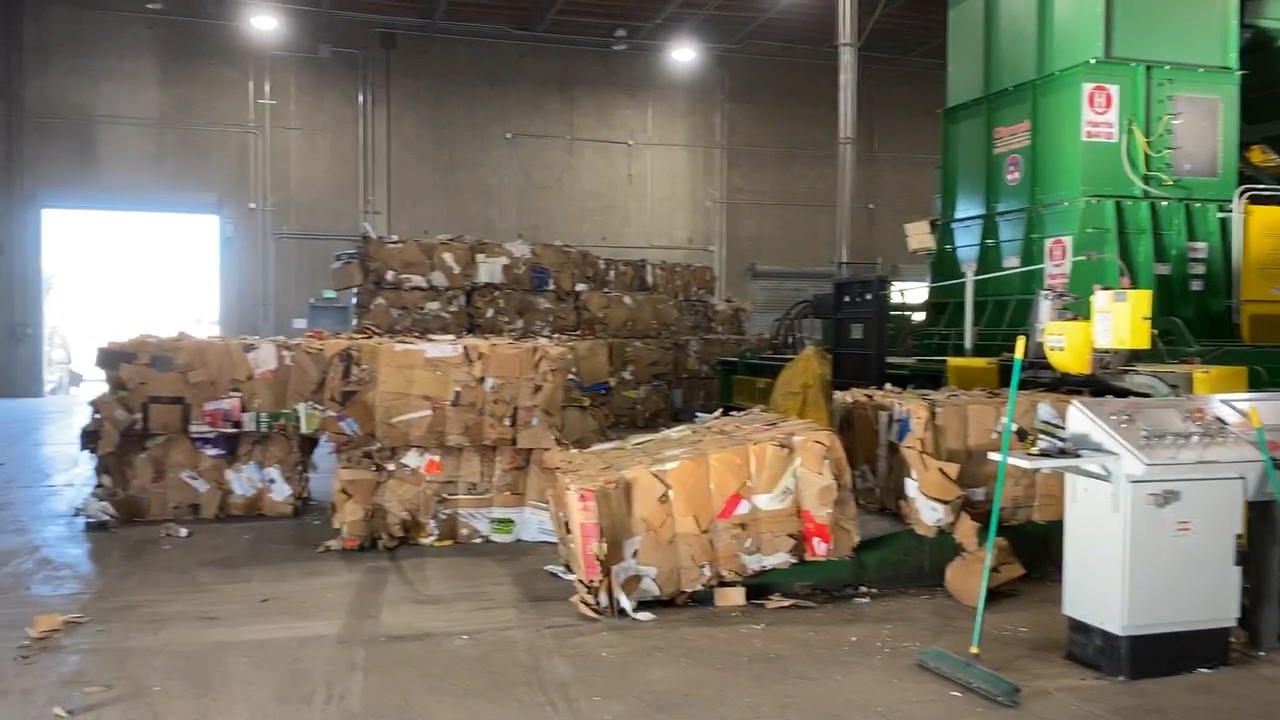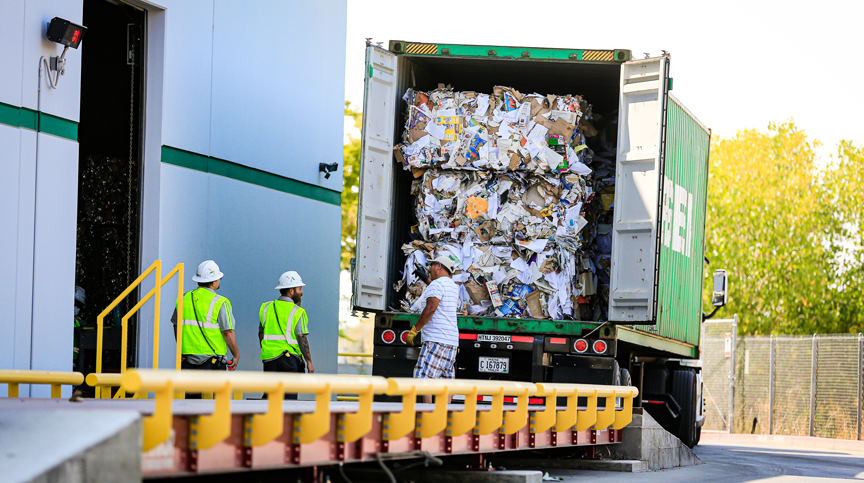
Recycling Facility
Cal-Waste believes in providing its local communities with a clean, safe and healthy environment. To aid in that effort, it operates a recycling processing center known as a Materials Recovery Facility, or MRF.
Opened on June 1, 2013, the MRF is helping communities meet a state requirement that 75 percent of all commercial waste is recycled. This unique facility includes our call center, administrative offices, repair and maintenance facility, the MRF system (for sorting recyclables) and a classroom with a viewing gallery. Watch the YouTube video of our existing facility by clicking on the photo to the left.
In 2020, Cal-Waste expanded it’s facility to incorporate a new state-of-the-art MRF to handle more recyclables and make cleaner products from them as required by the stricter standards being imposed by recycling markets. The video above showcases the technology of our upgraded MRF.
HOW IT WORKS
ARTICLES ABOUT RECYCLING AND OUR MRF
RECEIVING & SCREENING

Cal-Waste receives up to 400 tons of material daily, from our own collection trucks and from other regions where Cal-Waste doesn’t physically service residences and businesses. All these trucks drive into our facility where they are weighed for their contents before driving onto the tipping floor. Once on the tipping floor, the trucks empty their recyclables. The recyclables are then loaded onto the infeed belt where they’ll begin their journey through the MRF.
SORTING

The Cal-Waste MRF is unique in that it was one of the first MRFs to feature a primary auger screen. This auger screen removes smaller fraction and allows larger items to move across the top of the screen before entering the presort line.
The presort line is the first group of manual sorters who are able to pull any larger contamination off of the MRF line. These items range from tablets and larger electronics to pieces of wood, and even propane and helium tanks. On average, Cal-Waste workers are able to sort up to 44 items per minute.
After the presort line, materials are further fractioned by optical sorters, magnetic separators, eddy current, various applications of disc screens, and more manual sorters. All in all, there’s over 100 conveyor belts separating 15 commodity types using different mechanisms for sorting materials.
BALING

After the materials are sorted properly, they enter one of our silos or bunkers. When it comes time to package the materials for their next destination in the recycling process, one of our MRF operators will program one of the bunkers or silos to empty its contents to one of our two baler infeed belts. These balers use hydraulic rams that produce over 3,000 PSI of pressure, compacting the material into neat bales, bound with metal wire.
MARKETING & SHIPPING

Once baled, all of the recyclable items are stored locally and prepared for sale to national and international brokers. Demand, government policies, and restrictions determine where the recycled commodities go. Currently, Cal-Waste ships to both domestic and foreign recycling processors.
